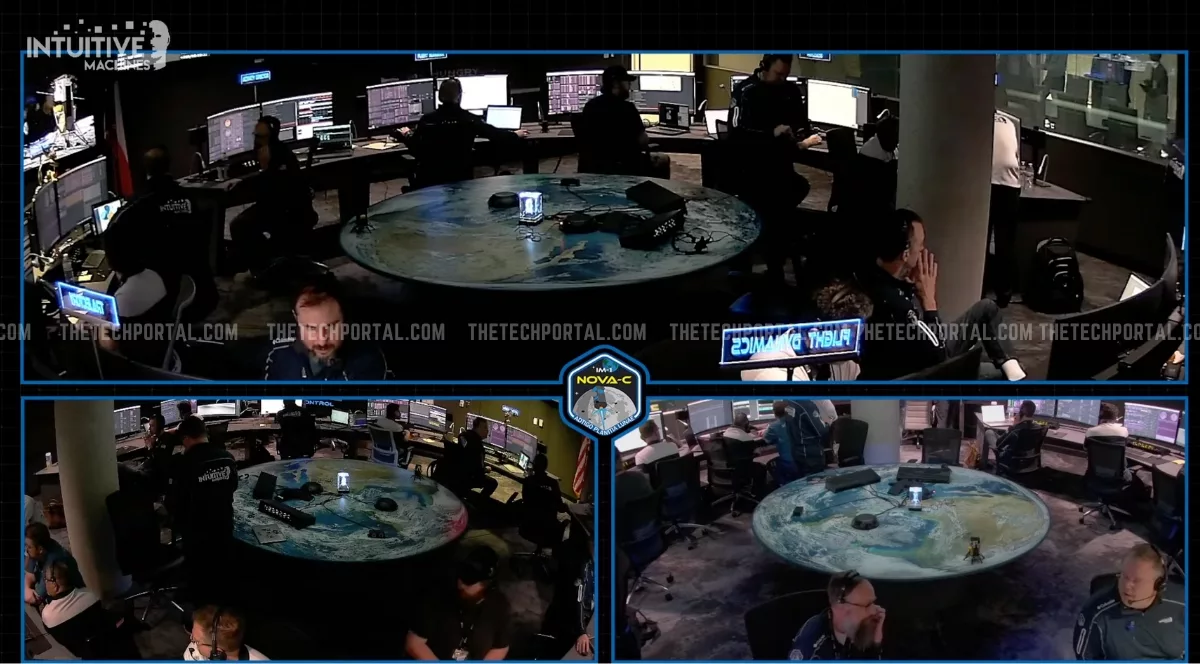
US back on lunar surface after 52 years, but lander signal weak
After decades, America has finally returned to the moon.
The past week witnessed a fascinating double act on the lunar stage, showcasing both the ambition of private space companies and the commitment of government agencies in humanity’s return to the Moon. This time, Intuitive Machines, a Houston-based company, etched its name in history by successfully landing its robotic spacecraft “Odysseus” on the lunar surface, becoming the first private entity to achieve this feat. This accomplishment followed a failed attempt by Astrobotic Technology, another American private company, just a month earlier.
However, communications from the lander were spotty at best and the ground team scrambled to establish a clear line of communication. There was no immediate word from the company on the condition — or even the exact location — of the lander. The company ended its live webcast soon after confirming a touchdown.
Meanwhile, on February 23rd, the eyes of the world turned towards NASA’s Artemis program as SpaceX’s Falcon 9 rocket roared skyward, carrying the uncrewed Orion spacecraft on its journey towards the Moon. This mission, Artemis I, marks a crucial test of the Orion capsule and its critical systems, paving the way for future missions that aim to return astronauts to the lunar surface.
Your order was delivered… to the Moon! 📦@Int_Machines‘ uncrewed lunar lander landed at 6:23pm ET (2323 UTC), bringing NASA science to the Moon’s surface. These instruments will prepare us for future human exploration of the Moon under #Artemis. pic.twitter.com/sS0poiWxrU
— NASA (@NASA) February 22, 2024
For its part, Intuitive made history at 6:23 p.m. New York time on Thursday when its robotic spacecraft, Odysseus (after a short delay) gently touched down on the lunar surface. Odysseus’ touchdown represents a significant milestone for private space exploration, as well as makes it the maiden commercial spacecraft to make a landing on the lunar surface (a feat previously accomplished only by government space agencies). The mission carried six NASA instruments designed to gather data on the lunar environment, contributing valuable insights for future crewed missions, and NASA’s laser and doppler lidar sensors, proved to be instrumental in guiding the spacecraft to the lunar surface.
“What we can confirm without a doubt is that our equipment is on the surface of the moon and we are transmitting,” Tim Crain, mission director and CTO of Intuitive Machines, commented on the matter. “So congratulations IM team, we’ll see how much more we can get from that. Houston, Odysseus has found its new home.” The spacecraft landed just outside the rim of a crater called Malapert-A. Currently, the company has confirmed that Odysseus is “upright and starting to send data,” and has managed to send a weak signal back to Earth. Intuitive is currently “working to downlink the first images from the lunar surface,” according to a post on X on the matter.
“As of our third planned mission, we’re seeing more and more non-CLPS payloads from both domestic and international companies and institutions,” Josh Marshall, communications director of Intuitive Machines, said. For those who need a refresher, NASA’s Commercial Lunar Payload Services program (CLPS) aims to leverage the growing capabilities of private companies to accelerate lunar exploration by facilitating partnerships between NASA and private entities, allowing them to compete for contracts to deliver payloads and perform services on the Moon.
Backed by a substantial investment of nearly $118 million from NASA, Intuitive Machines embarked on its lunar mission as part of a collaborative partnership with the space agency. Under NASA’s CLPS, the company was tasked with delivering scientific instruments and payloads to the lunar surface. The selection of the landing site for the Odysseus mission was driven by scientific considerations aimed at maximizing the mission’s research potential. By targeting the moon’s south pole region, Intuitive Machines sought to explore areas rich in resources such as water ice.

